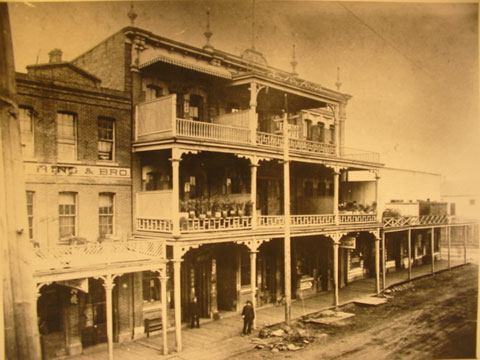Tongs
The Chinese character “tong” means a place to meet and talk. With the arrival of over one thousand Chinese immigrants to Victoria from the railroads and overseas in 1884, also came the desire of the Chinese people to create their own Chinese organizations where they could meet, talk, and relate to one another in a city in which the Chinese community was the minority. The tongs held great importance to the Chinese immigrants because they represented the familiarity of their motherland. The tong associations allowed the Chinese to manage as best they could with the cultural and racial conflicts in Victoria. They also served as political organizations dedicated to protecting Chinese rights and preserving the language and the culture.
Many different classifications of tongs exist in the Chinese culture, and in Victoria eight different tong classifications have been noted. The different tong associations actually gave their members social support in matters involving the white community or in disputes with members of differing tongs. If one tong member disputed with a member of a different tong, both of the tong associations would nonetheless back up each member. Often small disputes would turn into larger tong association conflicts, sometimes resulting in violence. When disputes amongst the tong associations became violent and resulted in hostility between the associations the end result was often characterized as a “tong war”.3 Unfortunately in North America, the tongs came to be wrongly associated with gang activity and criminal interests labelling tongs criminal associations.

An Altar Located in the CCBA
In Victoria a variety of different classifications of tongs have existed
and still exist today. The different classifications are county associations in which memberships are
based on the geographical origins of the members. For example, the
Yan Wo Tong was established in
1872. The members of dialect associations generally all speak the
same, or very similar languages.4
Members of dialect associations do not necessarily originate from the same
county and therefore do not always practice similar cultural and religious
beliefs as other members of their association. Clan associations are organized on the basis
of the member’s surnames. The members of clan societies all
have the same last names, thus uniting them.5
The Hongmen Society, or the Triad Society, originated as “a secret
political organization in China,"6
in the 1760’s. The Hongman tong in Victoria was called Chee Kung Tong and was established in 1876.
It is not a secret that these societies once depended on gambling, prostitution,
and opium dens for income. Various other tongs were established
further into the twentieth century based on religious, political, and recreational
practices. Leading all of the associations was the Chinese Consolidated Benevolent
Association(CCBA) established in 1884.